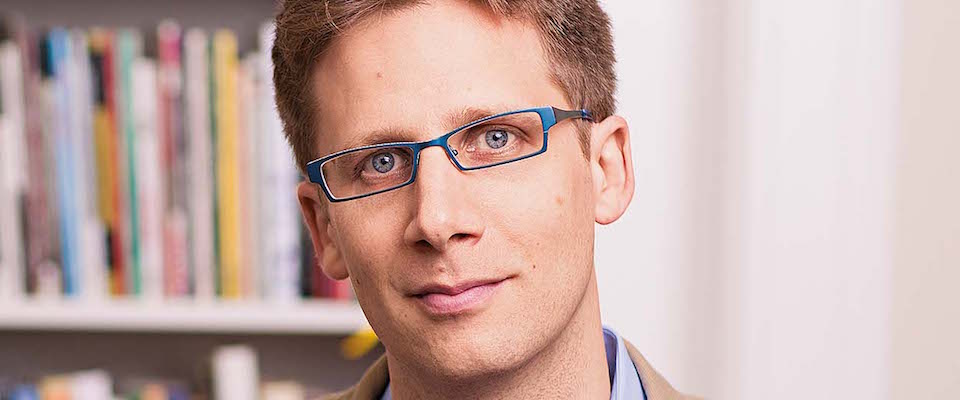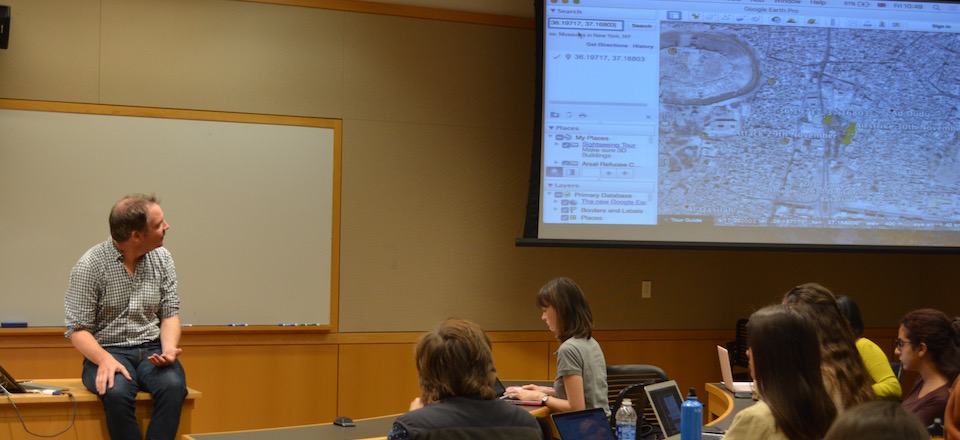5 Questions for Tom Griffiths, Professor of Psychology and Cognitive Science
1. You’re a psychologist who uses mathematical models and “big data” to understand how people think. Why not use traditional methods, such as lab experiments?
I think these methods are the future of psychology. As more sources of data about human behavior become available, we need to figure out how to leverage them to better understand the human mind. There are many things people still do better than computers—learning languages, figuring out causal relationships, inferring a new concept from a few examples. My collaborators and I have tried to come up with mathematical theories for how people do these things. We can test them outside of a lab experiment by making predictions about how people will behave in different settings like playing games, learning in online classes, and shopping online. This approach will not only help us understand people, but also make computers smarter.
2. In April, you published a book called Algorithms to Live By with Brian Christian, an author who was a visiting scholar at UC Berkeley’s Institute of Cognitive and Brain Sciences, which you direct. The book explores how insights from computer science can help people make decisions. What can algorithms teach us about, say, whom to marry?
Mathematicians and computer scientists have studied analogs of this problem for decades. You face a tension between the need to gather information (dating potential partners) and the need to act on it (settling down). The same tension comes up when Google decides whether to display a new ad or an old one they know attracts clicks.
Rather than following specific algorithms, the thing that I find most useful is understanding what optimal solutions look like in these everyday problems. Deciding when to get married is an “optimal stopping” problem: How do you know when to commit? Fortunately, there is a simple answer, at least for one construal of the underlying problem: You should spend the first 37 percent of your search meeting people. After that, you should be ready to propose to the first person who is better than anyone you have met so far.
3. Have you used any of the tools you write about to help make decisions in your own life?
I’ve used them when buying a house, choosing a restaurant, and figuring out when a project is done. In each of these cases, computer science and statistics offer helpful principles: Spend time looking before making an offer. Be optimistic about new opportunities. Perfectionism can be the enemy of a high-quality outcome.
For example, to maximize your chances of finding the best house, spend 37 percent of your search gathering information, and then make an offer on the first place that is better than any you have seen so far. However, this assumes your offer is always accepted, which isn’t true in the Bay Area. If your offer could be rejected, start making offers sooner. If there’s a 50 percent chance of rejection, start making offers after your search is 25 percent complete.
4. You write that “Sometimes the best solution to a problem is to turn to chance rather than trying to fully reason out an answer.” This seems irrational.
We tend to think that making rational decisions means considering all options, weighing each one carefully, and reaching the one right answer. In reality, both humans and computers have limited computational resources and limited time. Sometimes there are too many options, and considering each one isn’t worth it (Amazon.com lists more than 4,000 toothbrushes). Nailing down the pros and cons of each option can make us focus too much on irrelevant factors. Making approximations and taking chances makes some problems much easier to solve. Not getting the exact right answer can be worth it if it means we find a pretty good solution quickly. Computer scientists use this insight all the time, and it’s equally important for human decision-making.
5. What can artificial intelligence tell us about human intelligence?
When we can make a computer act like a human in a certain domain, it gives us clues about how to understand that aspect of the mind. When we fail to make a computer act like a human, it tells us that we can learn more by trying to reverse-engineer human behavior. By doing this research, I’ve realized that people are really pretty smart. If you read about human decision-making, it’s easy to get the impression that we just bumble our way through life irrationally. But people can do things we still have no idea how to make computers do, and our so-called irrationality might have more to do with constraints on resources than any fundamental lack of intelligence.





















